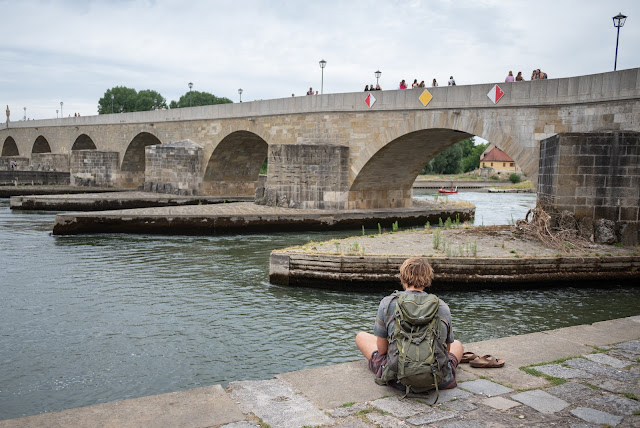Street Photography in Regensburg with the Nikon Z 28mm f/2.8 - A Review
The 28mm is a lens that is usually not considered for street photography. The say it is very wide which means you have to get close to get perfect compositions. That is indeed true if you only use the full frame. The reason is that the view is simply too wide to be interesting without a foreground. That foreground then becomes quite prominent which is what we want.
But if you are not afraid of cropping, you can use it like a 35mm too. You still need a foreground, but are no longer required to get close to it. Especially, people do not always like to approached in one- or two-meter distance. Some take a longer lens for street photography for that reason.
This specific 28mm is not up to the standards of the S-line for the Nikon Z. But it by no measures a bad lens. Especially beyond f/4 it is very sharp all around. The optimum is at f/5.6 where the lens holds up to most other prime lenses.
The images on this page are mostly at f/4 and show that the object isolation is present, but not prominent. I find it quite nice. You can still recognize the background well, but it is softer than your subject. If you get closer, the depth of field becomes smaller and there is background isolation even at higher f-stops. The following image is at f/9.
Of course, the lens can also be used as the wide-angle lens it is. I would have preferred a 20-24mm for the following composition. 28mm is borderline for that kind of architectural view. It adds to the problem that I had to distort the result a lot to straighten the walls in a way I liked. This turns the format into a trapezoid. In the end, a crop has to be selected to get a rectangular image.
Obviously, I am heavily post-processing my images, selecting crops, straightening walls, reducing highlights, enhancing shadows or contrast, etc. Often, this will change the format of the image to exclude people or stuff which does not belong to the composition. I also use the masks of Lightroom to change the light in brightness or color. This has to be done very carefully. But it has to be done, I think.
In the image below, the inside of the mushroom café is brightened up, and the ground got a warmer look.
The downsides of this lens are the chromatic errors in contrasty scenes. It does not get better closing down and is on the high side for a prime lens. I make sure to avoid scenes where this would matter. The contrast is also not on the level of the S-line lenses. You may hardly notice that besides in direct comparison. Call it imagination, but I always find images of the Nikon Z 50mm crispier. When trying to prove this, I always fail.
Note, that this 28mm is a lot smaller than the 50mm or any other S-line lens, and a lot lighter too. For street photography, these are qualities which are hard to overlook. The camera simply does no longer look that intimidating. The lens is also a lot cheaper, by the way.
The lens is reasonably fast with its f/2.8 maximal aperture. But be aware that f/4 often is the better choice, both for image quality and for depth of field. If there is no light for f/4 in a quiet scene, the image is probably not worth it anyway. I would use f/2.8 only for fast action, if necessary, together with higher ISO.
Finally, I show my preferred images, also from Regensburg, also with this lens, but from another photo walk. It shows that f/4 is mighty good enough if the camera can take ISO1600.







Comments
Post a Comment